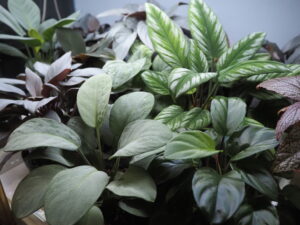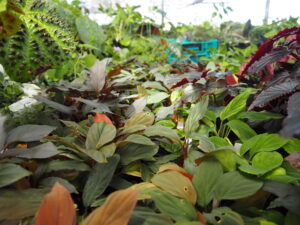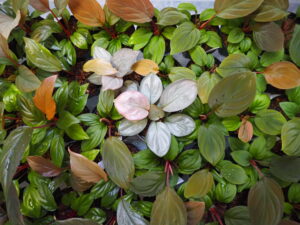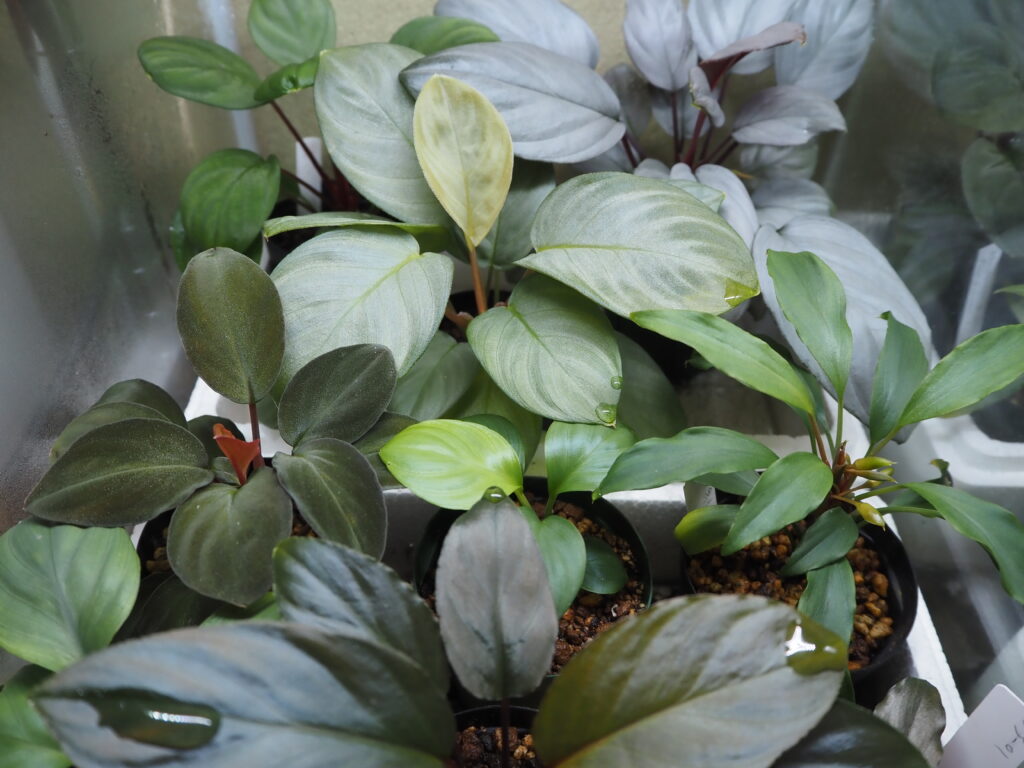
On this page, I will show you some of my methods of growing Homalomena. Based on these tips you will find your own cultivation method suitable for your growing environment.
1, How to grow indoors using soil.
Here, a little water is stored in a tray and a flowerpot is placed in it.
The glass box is close to sealed, but not completely sealed.
Homalomena will not keep its beautiful appearance for a long time if the underground part is permanently wet.
Water in the tray will evaporate and accumulate on the outside of the tray over time.
By allowing the plant to experience this period of dryness and wetness, it will grow strong roots.
From time to time, dump out the accumulated water and inject new water.
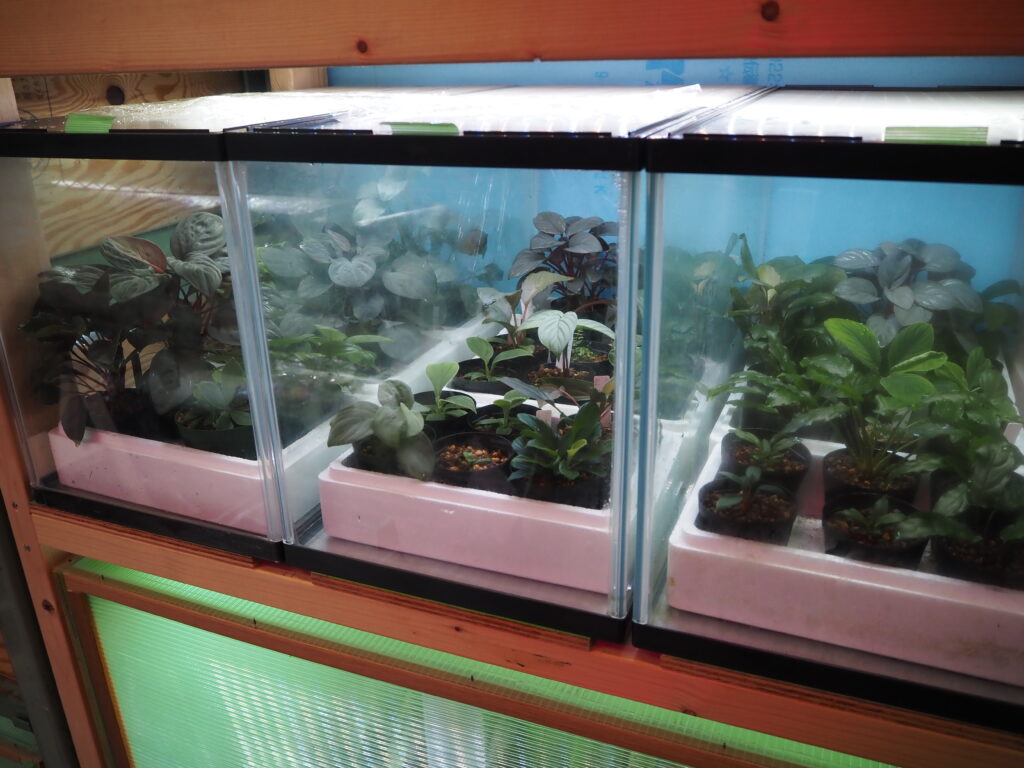
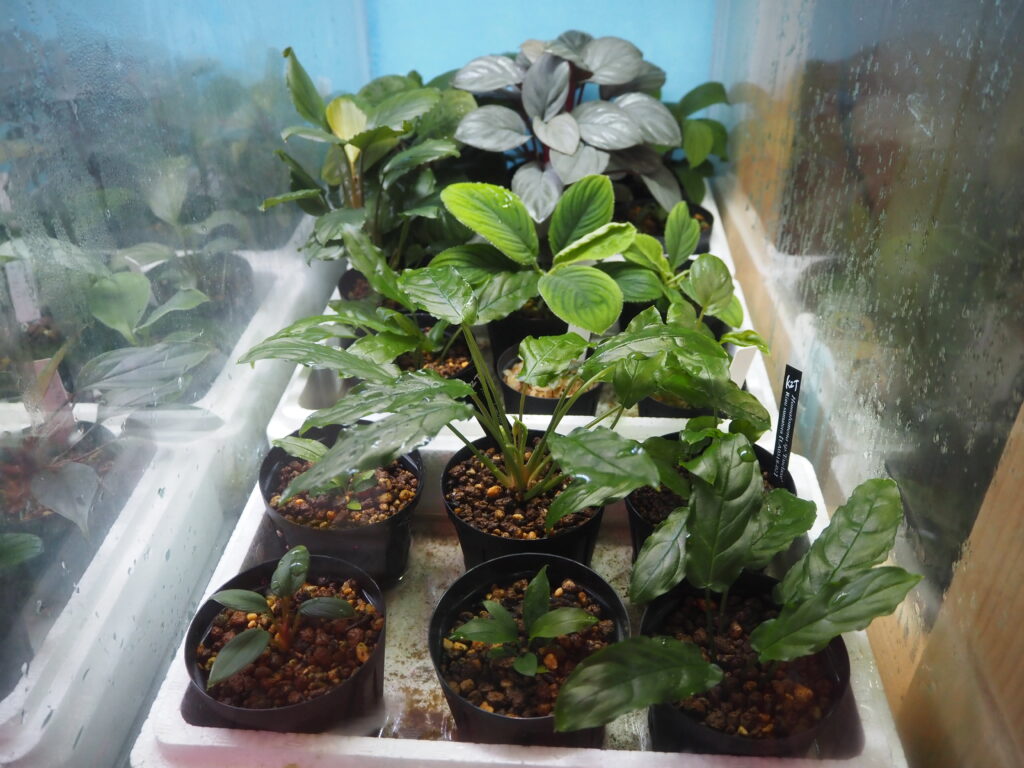
This method tends to make the humidity inside the box too high, so I open the lid periodically.
To keep the shape of Homalomena clean, you can manipulate it to some extent by adjusting the amount of light and humidity.
The stronger the light, the smaller the leaves will be.
When the light is low, the leaves become larger.
When the humidity is high, the leaves become larger.
When the humidity is low, the leaves become smaller.
The higher the humidity, the taller the plant will be.
Weak light makes them shorter.
These trends can be used as hints to find the right environment.
2, Grow in the toolbox.
The method of using a toolbox to grow Homalomena is very easy to manage.
Toolboxes are very suitable for growing Homalomena because they are not too humid and do not dry out too quickly.
It does not dry out too quickly, making it a very suitable container for cultivation.
The box is made of translucent material as shown in the photo, which makes it easy to adjust the amount of light.
Depending on the environment of the installation site, desert and oasis may occur at the same time even in the box, so it is necessary to check periodically.
If only one of the many Homalomena is wilting, something is causing the area to dry out easily.
For example, right above the lower light, the box is tilted, there is a heat source near the box, the number of leaves is more than other plants, etc.
There is an easiest way to do this for the lazy.
If you put a plastic bag between the box and the lid, the evaporation of water will not occur and you will not need to add water for a very long time.
However, this method often results in a bad shape of Homalomena.
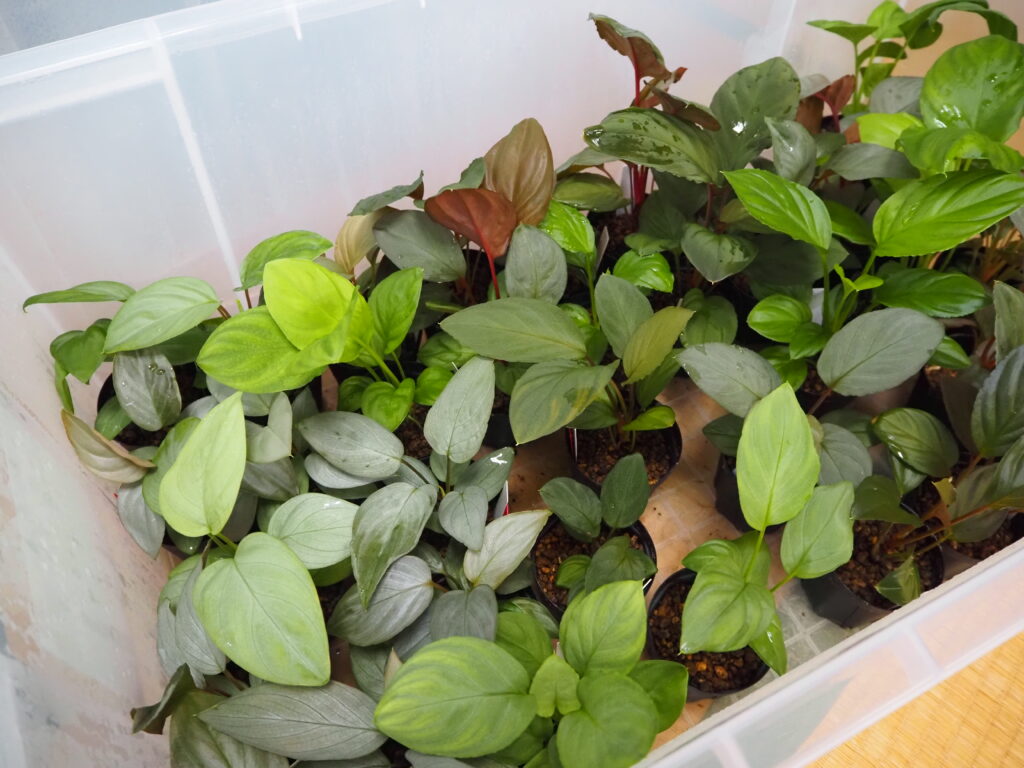

Growing Homalomena in a toolbox is not suitable for ornamental use.
It is better to use it for production or simply to satisfy your desire for possession.
You can open the box occasionally and smile all by yourself.
The toolbox can be used for both soil-based and water-moss-based methods.
In the method using water moss, the Homalomena may die as soon as the water is depleted, so
More checking is needed than with the method using soil.
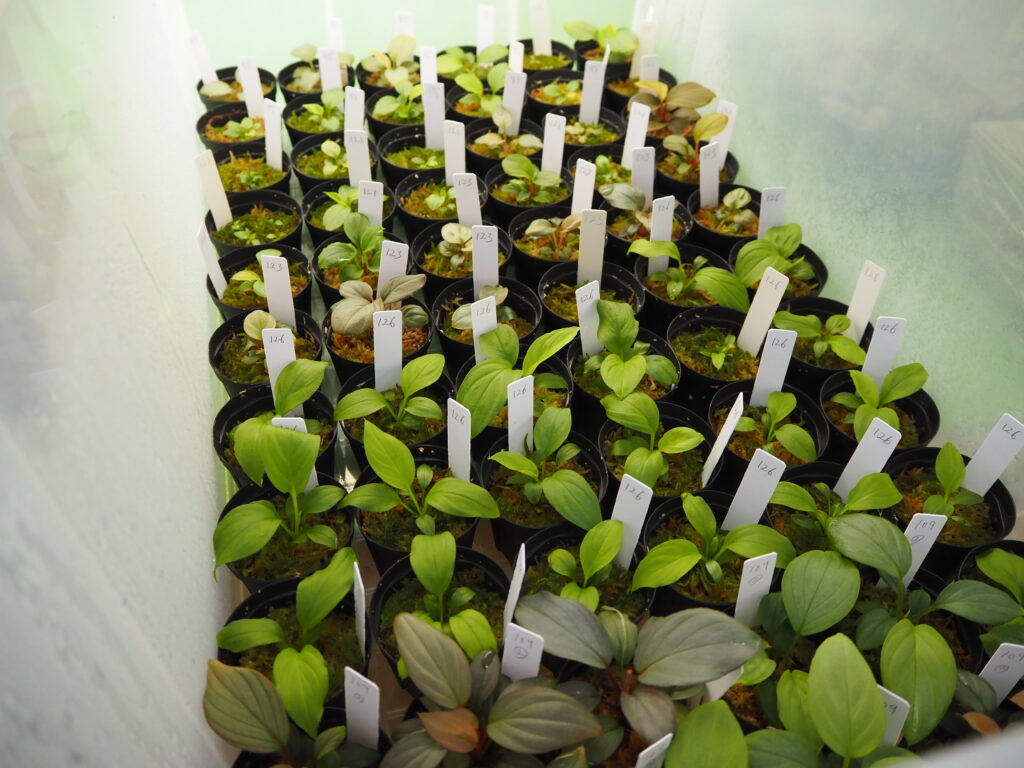
3,Growing outdoors

During the summer months in Japan, Homalomena plants can be grown in outdoor greenhouses.
This is Osaka, Japan. The maximum temperature is 38 degrees Celsius some days.
Maybe in some parts of the U.S., Thailand and Hong Kong, it is possible to grow outside all year round.
The outdoor greenhouse has a shade net on the roof.
Even though they can be grown outdoors, they do not grow well in direct sunlight.
They do not need strong light as they are normally found on the forest floor in the jungle.
To grow Homalomena in an outdoor greenhouse, you need to water it frequently.
Unlike larger houseplants, the body of Homalomena is small and sensitive to dryness.
Basically, it needs to be watered at least once every two days during the summer.
Repeatedly wetting the soil thoroughly and drying it for short periods of time will produce very strong roots.
Unlike indoor toolbox cultivation, the average humidity is low, so the shape of Homalomena tends to be short and rosette-shaped.
In the open air, Homalomena grows in sunlight, so its foliage has good coloration, and even though it is small, it has a large number of leaves, giving it a very beautiful appearance.
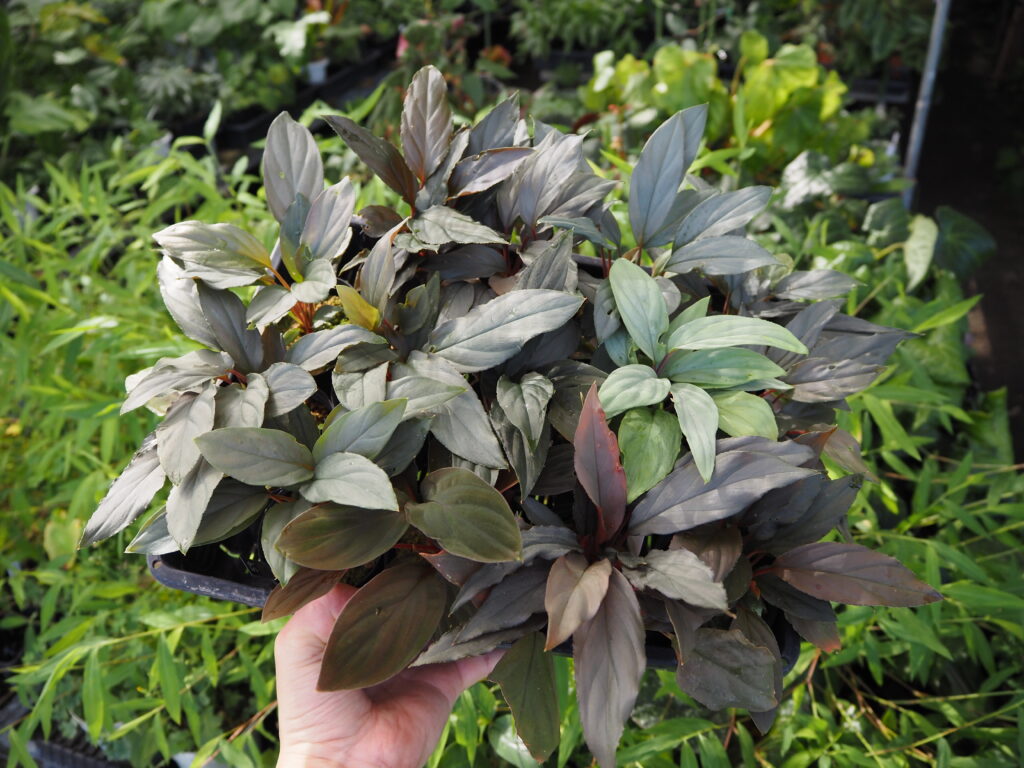
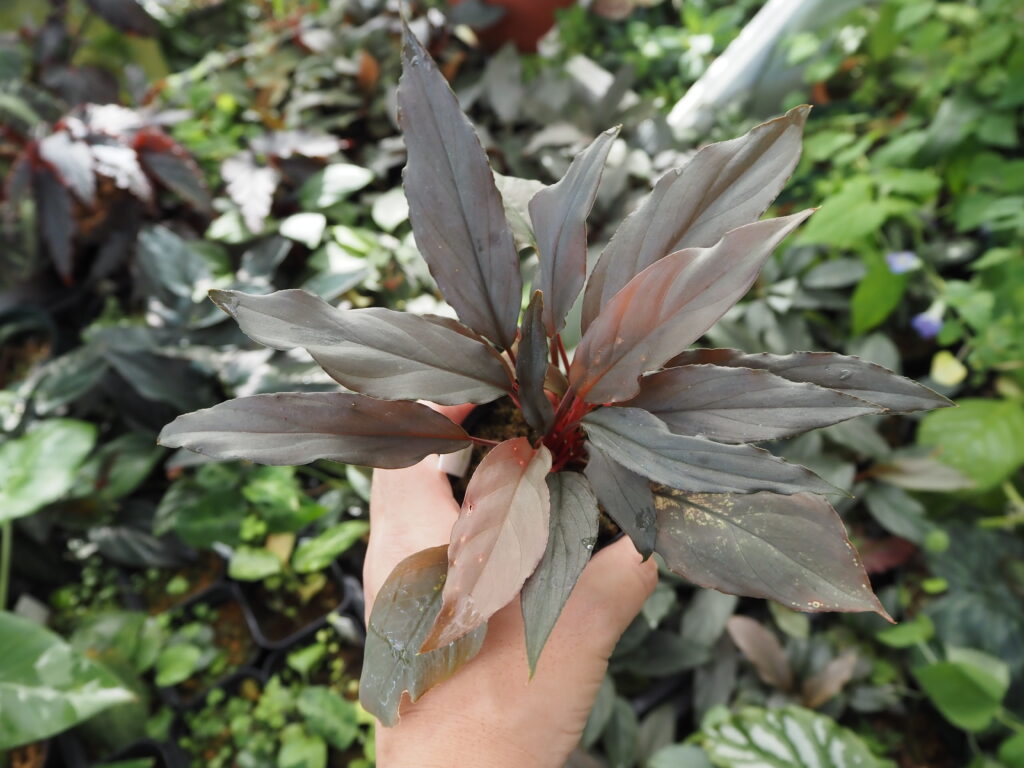
Growing in an outdoor greenhouse is also a good way for those who want to try their hand at cross-pollination, since the temperature and humidity changes naturally from day to night and from weather to weather.
If you move Homalomena that has been grown indoors or just after purchase to an outdoor greenhouse In the first few days, it will look wilted due to the change in environment. At that time, add shade and water the plants several times a day.
If they adapt well to the environment, they will recover in a few days.


